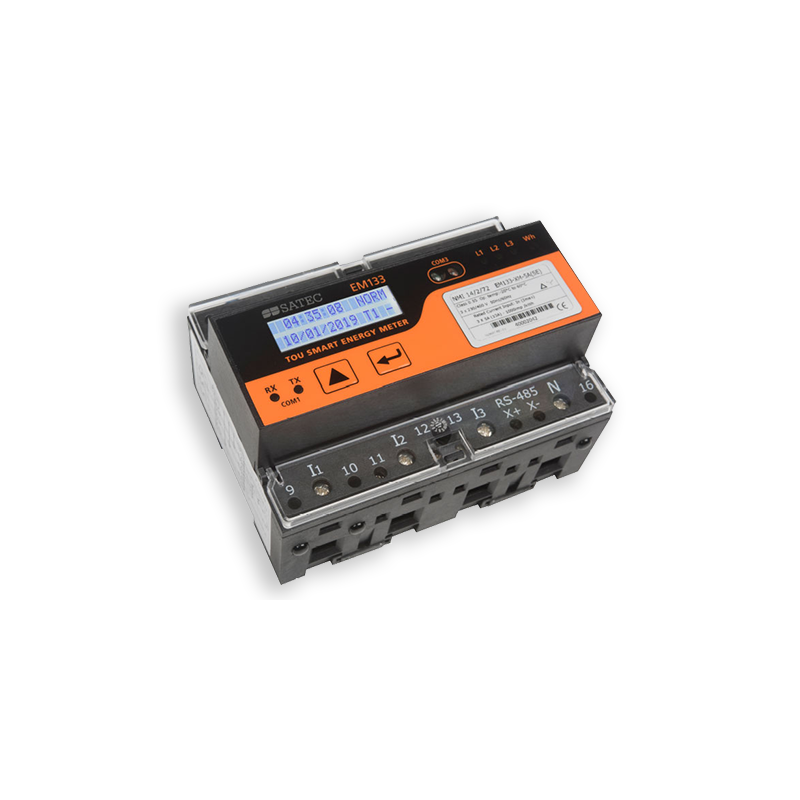Today’s world of electricity measurements is important to ensure various levels of readings are accurate, repeatable for data validation, billing accuracy and assurance of data integrity.
In Australia, measurement standards for Electricity Metering must comply with IEC/AS62053-xx and current transformers for metering must comply with IEC/AS60044-1.
Measuring loads below 100Amps with the use of Current Transformers (CT’s) potentially can create reading problems. It is not uncommon to find readings that could be in error due to the measurement technique’s being carried out. Dependent on the CT’s design and subject to their Accuracy Class and Burden many may inhibit reading errors that are incorrect for the application they were intended. More importantly if the loads being measured are low with respect to the CT ratio deployed. The table below is typical of the Accuracy and VA delivered by Toroidal (Donut) CT designs, although dependent on the manufacturer they will vary in specifications.
Ratio of CT
40/5A
50/5A
60/5A
75/5A
100/5A
Accuracy Class 0.5
–
1VA
1VA
1.5VA
2VA
Accuracy Class 1.0
–
2VA
2VA
3VA
3.75VA
Accuracy Class 3
3VA
3VA
3.25VA
4VA
3.5VA
Accuracy Class 0.5S
–
–
–
–
2.5VA
Accuracy Class 0.2S
–
–
–
–
1VA
Connection of the CT with the electrical meter introduces additional burdens which may have an impact on the measuring system accuracy due to the inadequate burden of the CT to drive the electrical metering device. Additionally phase angle error accuracy’s represented in degrees by the current transformers also create further errors to the energy/power meter readings. At unity power factor generally the phase angle error maybe negligible, but deteriorates as the power factor decreases. Phase angle errors involving watts, vars, energy, and power factor have an impact on reading outcomes when it comes to power measurements.
In addition to the accuracy performance of an electrical meter, its performance also relies on the installation merits such as CT sizing with respect to load conditions, accuracy of CT, lead length, burden of CT, correct connection of voltage and current inputs with respect to their phase relationships. Furthermore correct settings of the meter must be programmed such as voltage input, CT ratio, and system configuration.
The above factors as a consequence of poor or lack of following standards and correct procedures will cause potential errors in readings.
In overcoming reading errors below 100Amp, there are options that can be considered as opposed to using standard CT’s per the above table.
Direct Connect Meters with a current input of 0-100 Amps with the metering designed to an accuracy Class of 0.5S.
Installing direct connect meters with Accuracy Class 0.5S will overcome reading electricity measurement error problems at low loads. SATEC’s EM133 with direct connect for 0-100Amps provides the ideal solution, with readings down to 50 milliamps. The SATEC Meter provides accurate readings over the dynamic range in addition to the linearity of the measurements. SATEC’s EM133 has NMI certification for use in Energy Billing and is generally recommended for NABERS applications. Accuracy Class 0.5S is designed for measurement accuracy from 1% to 120% of rated current. Whereas Accuracy Class 1 and 0.5 is designed for measurement accuracy from 5% to 120% of rated current. The SATEC EM133 exceeds the measurement performance for Class 0.5S metering.
High Accuracy Current Sensors (HACS) with a resolution down to 0.1% of current or better. The HACS are designed for use with SATEC metering hardware. The current range includes HACS designed for 0-100A, 200A, 400A, 800A, 1200A, 2000A, 3000A. SATEC designed current sensors can be used with Models EM132, EM133, PM130EH, PM135EH, BFM136, PM172, PM175, PM180 & ezPAC SA300 when ordered as HACS input version.
The SATEC EM133 is designed in a compact Din Rail Mounted package and offers the smallest footprint measuring 125 x 90 x 75mm for a multifunction energy meter designed for NMI approval.




